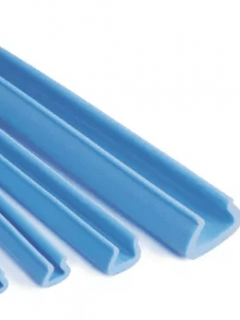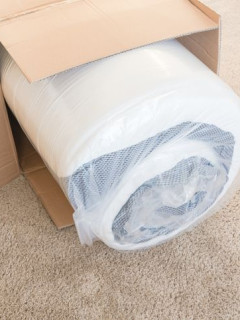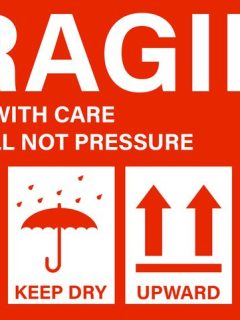Confectioning of goods. What does this mean? The simplest definition is that it is – quite simply – the packaging and repackaging of products, without altering their physical characteristics. It is most often associated with preparing an online shop’s assortment for sale or dispatch. The packing of goods is carried out by a packer. This person may be employed directly by the e-commerce company. More often, however, the role of the packer is assumed by an employee of an external outsourcing company, which has been contracted to provide the packing service (a form of financial and operational relief).
What is important to know about packing?
Properly performed order picking produces positive results. The packed product is visually attractive, correctly labelled and 100% ready for transport and distribution. Packed goods are very easy to identify – both during the logistics process and on the sales floor.
What is packaging? What is it?
Packing involves activities such as:
- labelling – supplementing product information or additional messages, e.g. parameters, nutritional tables, language translations,
- inserting appropriate labelling – usually by means of a barcode,
- repackaging, i.e. replacing the factory-made, bulk carton with individual boxes – this involves placing goods in individual, dedicated, often advertising cartons,
- insertion – adding freebies and discount coupons, samplers, advertising material, instruction manuals,
- packaging using machines.
These are not all the techniques that are used when packaging goods. A fairly common activity is picking or picking with matching. What is involved? The first method involves preparing a set of several identical products (typical of the “2+1 free” promotions that appear in the supermarket). Picking with matching is often used in drugstores, pharmacies. The technique involves creating a package of products with different or similar purposes, matched according to a specific criterion. An example of this are ‘1+1 free’ sets, consisting of, for example, shampoo and hair conditioner or antiperspirant and deodorant spray.
The confectioner manages stock levels and enters new barcodes for specific products. Thanks to these actions, he has control over the number of goods in stock (e.g. he knows which barcodes have been attached).
The packaging of goods also includes palletising and securing the products for transport. Importantly, there should be multiple parcels on one pallet for transport. All parcels must meet requirements such as the presence of proper, matching packaging, parcel fillers, and stretch film to wrap the finished loads.
Key advantages of packaging. Advantages of packed goods
You have already learned what it means to pack goods. This activity is important – both for large retail chains and for smaller online shops. Confectioning helps to build a strong, positive brand image, which – indirectly – influences greater shopper loyalty and loyalty.
A major advantage of confectioning is faster delivery. Customers should be confident that the packaged product will arrive intact. One sales technique is to create special promotional kits. Discounts increase interest in the online shop’s offer. Professional confectioning provides a brand advantage over competitors – we are talking about those rivals who have not decided to introduce ancillary activities in their company, such as just confectioning.
Why use an outsourcing company for packing?
Hiring an external outsourcing company for goods packing will allow an e-commerce company to focus on other, much more important areas of the business. The entrepreneur can seamlessly: seek new orders, devote more time to customers, develop new marketing strategies, actively manage social media.
Using an external outsourcing company provides (indirect) financial benefits. The entrepreneur no longer needs to rent a large room to fulfil orders. All he has to do is wait until the packagers have finished performing the service. In this situation, he is also the customer, so he can expect the order to be fulfilled to a high standard, flawlessly. External outsourcing companies often offer attractive courier shipping rates.
The packaging of goods is also sometimes handled by companies in the packaging industry. They have modern machinery at their disposal. The benefits of working with a company of this type are: cost optimisation as well as speeding up logistical processes, e.g. by properly packing and securing the goods. Packaging takes place automatically. This significantly reduces the time taken – no time is wasted on unnecessary, lengthy activities. The result is a properly packaged, aesthetically pleasing packed product.
Principles of packaging and protecting packaged goods
Employees of an outsourcing company specialising in goods confectioning are well versed in the ins and outs of packaging and securing products. They have all the rules of packaging e-commerce shipments in a pinch. They use durable, top-quality cartons, fillers and films. What is worth paying attention to when packing and securing packaged goods (and more)?
Incorrectly selected type and size of cardboard box
The cardboard box in which the item being transported will be placed should be well matched to it in terms of size, shape. Most orders go well with lighter but durable cardboard boxes made of 3-ply or 5-ply cardboard. For heavy contents (e.g. furniture, musical instruments), it is better to choose packaging made of the more robust 7-ply cardboard.
Selecting the right type of cardboard box for the goods in question is extremely important. For example: there is a significant difference between the popular cut and die-cut cardboard boxes. For smaller shipments (e.g. documents, jewellery, electronic accessories, thin books), it is worth investing in bubble envelopes.
Lack of or inadequate parcel fillers, stretch film
Most parcels should contain parcel filler – its absence is usually a serious mistake. The most popular product of this type is the multi-purpose, cushioning bubble wrap (bubble film). Other examples include: wrapping paper, air cushions, flopak, skropak or SizzlePak – these too guarantee strong, solid protection for the contents of the parcel.
Individuals often overlook stretch film when packing – which is a shame. This stretchy, robust product adapts perfectly to the surface of the carton to be wrapped.
Lack of airtight sealing of the parcel and warning labels
Every parcel must be hermetically sealed, e.g. with ecological packing tape. In order for the parcel to reach the addressee safely or to be repacked, it must be marked with warning labels. Most of these have established, universal designs, lettering, graphics – so that foreigners who come into contact with the consignment will know how to handle it. Tags and stickers can be purchased in bulk, from an online shop, or you can print them yourself. Check: How to choose a label printer?
If you want to expand your knowledge of effective parcel packing, read: How not to pack parcels? 5 rules of packing in e-commerce.
Cartons ideal for packaging. Only at RAJA
RAJA is a leading company in the packaging industry. It stands out for its extensive product range. The flagship products it can boast are a variety of cut (postal) cartons – good for packaging and shipping. There is also no shortage of book wrappers, cartons with automatic bottoms and telescopic cartons.
Are all goods suitable for packing?
Almost anything can be packed. However, the most common types of packing are cosmetics sets, clothes, simple tools and stationery. Tableware, children’s toys, electronics, cutlery, pots and pans and other household items can also be packed. Among food products, condiments are often confectioned.














